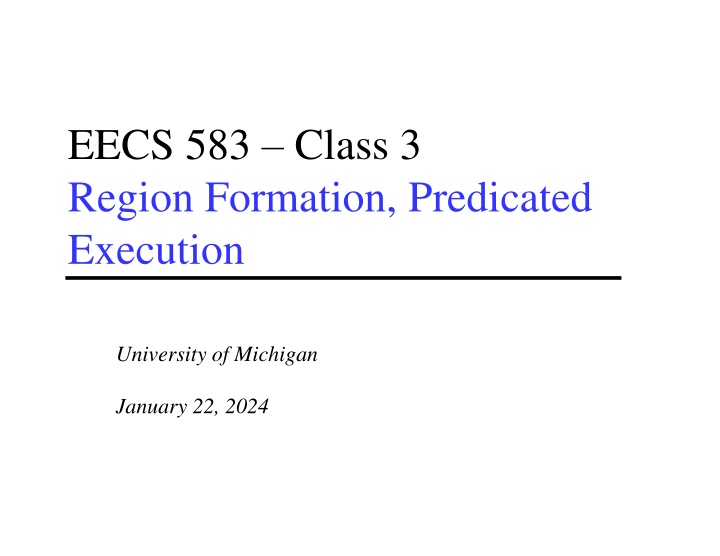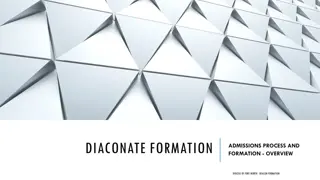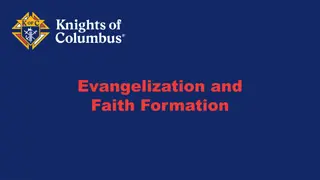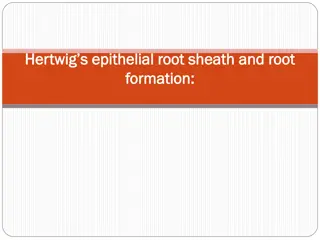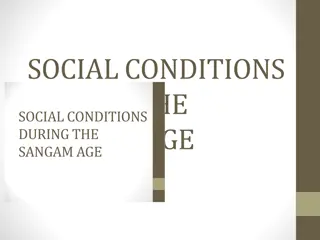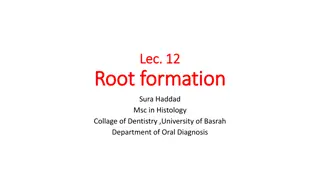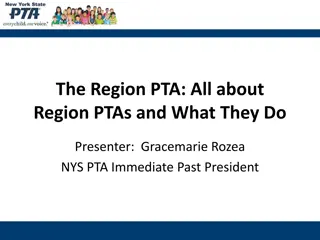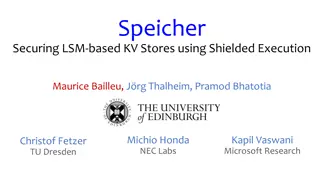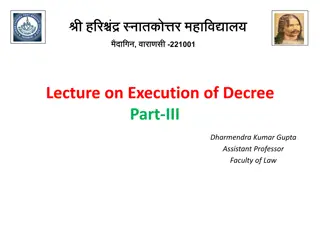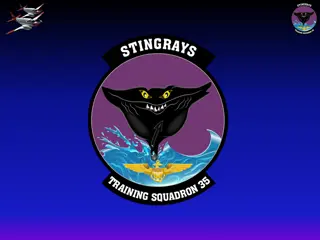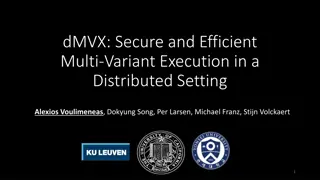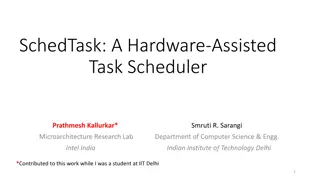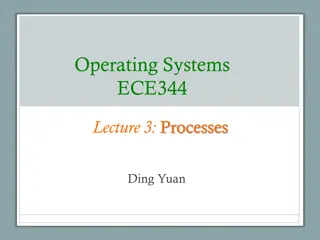Region Formation and Predicated Execution Overview
This content provides insights into region formation and predicated execution discussed in a university class at the University of Michigan. It covers the concept of regions as collections of operations treated as a single unit, challenges in handling basic blocks, and the need for intermediate-sized regions with simpler control flow. The material delves into different region types, such as traces, and their compilation strategies for efficient execution. Additionally, it touches on linearizing traces to optimize code execution paths.
Download Presentation

Please find below an Image/Link to download the presentation.
The content on the website is provided AS IS for your information and personal use only. It may not be sold, licensed, or shared on other websites without obtaining consent from the author.If you encounter any issues during the download, it is possible that the publisher has removed the file from their server.
You are allowed to download the files provided on this website for personal or commercial use, subject to the condition that they are used lawfully. All files are the property of their respective owners.
The content on the website is provided AS IS for your information and personal use only. It may not be sold, licensed, or shared on other websites without obtaining consent from the author.
E N D
Presentation Transcript
EECS 583 Class 3 Region Formation, Predicated Execution University of Michigan January 22, 2024
Announcements & Reading Material HW1 Due next Monday, Jan 29 http://web.eecs.umich.edu/~mahlke/courses/583f24/homeworks Today s class Trace Selection for Compiling Large C Applications to Microcode , Chang and Hwu, MICRO-21, 1988. The Superblock: An Effective Technique for VLIW and Superscalar Compilation , Hwu et al., Journal of Supercomputing, 1993 Material for Monday The Program Dependence Graph and Its Use in Optimization , J. Ferrante, K. Ottenstein, and J. Warren, ACM TOPLAS, 1987 This is a long paper the part we care about is the control dependence stuff. The PDG is interesting and you should skim it On Predicated Execution , Park and Schlansker, HPL Technical Report, 1991. - 1 -
Regions Region: A collection of operations that are treated as a single unit by the compiler Examples Basic block Procedure Body of a loop Properties Connected subgraph of operations Control flow is the key parameter that defines regions Hierarchically organized Problem Basic blocks are too small (3-5 operations) Hard to extract sufficient parallelism Procedure control flow too complex for many compiler xforms Plus only parts of a procedure are important (90/10 rule) - 2 -
Regions (2) Want Intermediate sized regions with simple control flow Bigger basic blocks would be ideal !! Separate important code from less important Optimize frequently executed code at the expense of the rest Solution Define new region types that consist of multiple BBs Profile information used in the identification Sequential control flow (sorta) Pretend the regions are basic blocks - 3 -
Region Type 1 - Trace Trace - Linear collection of basic blocks that tend to execute in sequence Likely control flow path Acyclic (outer backedge ok) Side entrance branch into the middle of a trace Side exit branch out of the middle of a trace Compilation strategy Compile assuming path occurs 100% of the time Patch up side entrances and exits afterwards Motivated by scheduling (i.e., trace scheduling) 10 BB1 90 80 20 BB2 BB3 80 20 BB4 10 BB5 90 10 BB6 10 - 4 -
Linearizing a Trace 10 (entry count) BB1 20 (side exit) 80 BB2 BB3 90 (entry/ exit count) 80 20 (side entrance) BB4 10 (side exit) BB5 90 10 (side entrance) BB6 10 (exit count) - 5 -
Intelligent Trace Layout for Icache Performance Intraprocedural code placement Procedure positioning Procedure splitting BB1 trace1 BB2 trace 2 BB4 BB6 trace 3 BB3 The rest BB5 Procedure view Trace view - 6 -
Issues With Selecting Traces Acyclic Cannot go past a backedge Trace length Longer = better ? Not always ! On-trace / off-trace transitions Maximize on-trace Minimize off-trace Compile assuming on-trace is 100% (ie single BB) Penalty for off-trace Tradeoff (heuristic) Length Likelihood remain within the trace 10 BB1 90 80 20 BB2 BB3 80 20 BB4 10 BB5 90 10 BB6 10 - 7 -
Trace Selection Algorithm i = 0; mark all BBs unvisited while (there are unvisited nodes) do seed = unvisited BB with largest execution freq trace[i] += seed mark seed visited current = seed /* Grow trace forward */ while (1) do next = best_successor_of(current) if (next == 0) then break trace[i] += next mark next visited current = next endwhile /* Grow trace backward analogously */ i++ endwhile - 8 -
Best Successor/Predecessor Node weight vs edge weight edge more accurate THRESHOLD controls off-trace probability 60-70% found best Notes on this algorithm BB only allowed in 1 trace Cumulative probability ignored Min weight for seed to be chose (ie executed 100 times) best_successor_of(BB) e = control flow edge with highest probability leaving BB if (e is a backedge) then return 0 endif if (probability(e) <= THRESHOLD) then return 0 endif d = destination of e if (d is visited) then return 0 endif return d end procedure - 9 -
Example Problems Find the traces. Assume a threshold probability of 60%. 100 100 BB1 BB1 20 80 60 40 BB2 BB3 BB2 BB3 50 10 5 135 100 80 20 BB4 BB4 BB5 BB6 25 51 49 15 35 BB5 BB6 BB7 25 10 41 75 49 BB8 BB7 BB8 450 100 41 10 BB9 - 10 -
Traces are Nice, But Treat trace as a big BB Transform trace ignoring side entrance/exits Insert fixup code aka bookkeeping Side entrance fixup is more painful Sometimes not possible so transform not allowed Solution Eliminate side entrances The superblock is born 10 BB1 90 80 20 BB2 BB3 80 20 BB4 10 BB5 90 10 BB6 10 - 11 -
Region Type 2 - Superblock Superblock - Linear collection of basic blocks that tend to execute in sequence in which control flow may only enter at the first BB Likely control flow path Acyclic (outer backedge ok) Trace with no side entrances Side exits still exist Superblock formation 1. Trace selection 2. Eliminate side entrances 10 BB1 90 80 20 BB2 BB3 80 20 BB4 10 BB5 90 10 BB6 10 - 12 -
Tail Duplication To eliminate all side entrances replicate the tail portion of the trace Identify first side entrance Replicate all BB from the target to the bottom Redirect all side entrances to the duplicated BBs Copy each BB only once Max code expansion = 2x-1 where x is the number of BB in the trace Adjust profile information 10 BB1 90 80 20 BB2 BB3 80 20 BB4 10 BB5 90 10 BB6 10 - 13 -
Superblock Formation 10 10 BB1 BB1 20 90 80 80 20 64.8 BB2 BB2 BB3 BB3 80 20 80 20 18 BB4 BB4 BB4 8 10 2 Duplicate BB4 and BB6 and adjust control flow 72 BB5 BB5 90 10 10 BB6 BB6 BB6 7.2 25.2 2.8 10 - 14 -
Issues with Superblocks 10 Central tradeoff Side entrance elimination Compiler complexity Compiler effectiveness Code size increase Apply intelligently Most frequently executed BBs are converted to SBs Set upper limit on code expansion 1.0 1.10x are typical code expansion ratios from SB formation BB1 20 80 64.8 BB2 BB3 80 20 18 BB4 BB4 8 2 72 BB5 10 BB6 BB6 7.2 25.2 2.8 - 15 -
Class Problem Create the superblocks, trace threshold is 60% 100 BB1 20 80 BB2 BB3 80 20 BB4 51 49 BB5 BB6 10 41 49 BB7 BB8 450 41 10 BB9 - 16 -
Class Problem Solution Superblock Formation To convert trace 1-3-4 into a superblock, BB4 is duplicated and the edge weights are adjusted 100 100 Each color represents a trace. BB1 BB1 20 20 80 80 BB2 BB3 BB2 BB3 20 80 80 20 BB4 BB4 BB4 9.8 40.8 39.2 51 49 10.2 BB5 BB6 BB5 BB6 10 10 41 41 49 49 BB7 BB8 BB7 BB8 450 450 41 41 10 10 Create the superblocks, trace threshold is 60% BB9 BB9 - 17 -
An Alternative to Branches: Predicated Execution Hardware mechanism that allows operations to be conditionally executed Add an additional boolean source operand (predicate) ADD r1, r2, r3 if p1 if (p1 is True), r1 = r2 + r3 else if (p1 is False), do nothing (Add treated like a NOP) p1 referred to as the guarding predicate Predicated on True means always executed Omitted predicated also means always executed Provides compiler with an alternative to using branches to selectively execute operations If statements in the source Realize with branches in the assembly code Could also realize with conditional instructions Or use a combination of both - 18 -
Predicated Execution Example a = b + c if (a > 0) e = f + g else e = f / g h = i - j BB1 BB1 BB3 BB3 BB2 BB4 add a, b, c bgt a, 0, L1 div e, f, g jump L2 L1: add e, f, g L2: sub h, i, j BB1 BB2 BB3 BB4 Traditional branching code BB1 BB1 BB1 BB3 BB2 BB4 add a, b, c if T p2 = a > 0 if T p3 = a <= 0 if T div e, f, g if p3 add e, f, g if p2 sub h, i, j if T BB1 BB2 BB3 BB4 p2 BB2 p3 BB3 Predicated code - 19 -
What About Nested If-then-elses? a = b + c if (a > 0) if (a > 25) e = f + g else e = f * g else e = f / g h = i - j BB1 BB1 BB3 BB3 BB2 BB6 BB6 BB5 BB4 add a, b, c bgt a, 0, L1 div e, f, g jump L2 L1: bgt a, 25, L3 mpy e, f, g jump L2 L3: add e, f, g L2: sub h, i, j BB1 BB2 BB3 BB5 BB6 BB4 Traditional branching code - 20 -
Nested If-then-elses No Problem a = b + c if (a > 0) if (a > 25) e = f + g else e = f * g else e = f / g h = i - j BB1 BB1 BB1 BB3 BB3 BB3 BB6 BB5 BB4 add a, b, c if T p2 = a > 0 if T p3 = a <= 0 if T div e, f, g if p3 p5 = a > 25 if p2 p6 = a <= 25 if p2 mpy e, f, g if p6 add e, f, g if p5 sub h, i, j if T BB1 BB2 BB3 BB4 BB5 BB6 Predicated code What do we assume to make this work ?? if p2 is False, both p5 and p6 are False So, predicate setting instruction should set result to False if guarding predicate is false!!! - 21 -
Benefits/Costs of Predicated Execution Benefits: - No branches, no mispredicts - Can freely reorder independent operations in the predicated block - Overlap BB2 with BB5 and BB6 BB1 BB1 BB2 BB3 BB4 BB5 BB6 BB7 BB2 BB3 BB4 Costs (execute all paths) -worst case schedule length -worst case resources required BB5 BB6 BB7 - 22 -
HPL-PD Compare-to-Predicate Operations (CMPPs) How do we compute predicates Compare registers/literals like a branch would do Efficiency, code size, nested conditionals, etc 2 targets for computing taken/fall-through conditions with 1 operation p1, p2 = CMPP.cond.D1a.D2a (r1, r2) if p3 p1 = first destination predicate p2 = second destination predicate cond = compare condition (ie EQ, LT, GE, ) D1a = action specifier for first destination D2a = action specifier for second destination (r1,r2) = data inputs to be compared (ie r1 < r2) p3 = guarding predicate - 23 -
CMPP Action Specifiers Guarding predicate Compare Result UN UC ON OC AN AC 0 0 1 1 0 1 0 1 0 0 0 1 0 0 1 0 - - - 1 - - 1 - - - 0 - - - - 0 UN/UC = Unconditional normal/complement This is what we used in the earlier examples guard = 0, both outputs are 0 guard = 1, UN = Compare result, UC = opposite ON/OC = OR-type normal/complement AN/AC = AND-type normal/complement - 24 -
OR-type, AND-type Predicates p1 = 0 p1 = cmpp_ON (r1 < r2) if T p1 = cmpp_OC (r3 < r4) if T p1 = cmpp_ON (r5 < r6) if T p1 = 1 p1 = cmpp_AN (r1 < r2) if T p1 = cmpp_AC (r3 < r4) if T p1 = cmpp_AN (r5 < r6) if T p1 = (r1 < r2) | (!(r3 < r4)) | (r5 < r6) p1 = (r1 < r2) & (!(r3 < r4)) & (r5 < r6) Wired-OR into p1 Wired-AND into p1 Generating predicated code for some source code requires OR-type predicates Talk about these later used for control height reduction - 25 -
Use of OR-type Predicates a = b + c if (a > 0 && b > 0) e = f + g else e = f / g h = i - j BB1 BB1 BB5 BB2 BB2 BB3 BB4 add a, b, c ble a, 0, L1 ble b, 0, L1 add e, f, g jump L2 L1: div e, f, g L2: sub h, i, j BB1 BB5 BB2 BB3 Traditional branching code BB4 BB1 BB1 BB5 BB3 BB2 BB4 add a, b, c if T p3, p5 = cmpp.ON.UC a <= 0 if T p3, p2 = cmpp.ON.UC b <= 0 if p5 div e, f, g if p3 add e, f, g if p2 sub h, i, j if T Predicated code BB1 BB5 BB2 BB3 BB4 p2 BB2 p3 BB3 p5 BB5 - 26 -
Homework Problem Answer on next slide but don t cheat! if (a > 0) { if (b > 0) r = t + s else u = v + 1 y = x + 1 } a. b. all branches Draw the CFG Predicate the code removing - 27 -
Homework Problem Answer if (a > 0) { if (b > 0) r = t + s else u = v + 1 y = x + 1 } a > 0 p1 = cmpp.UN(a > 0) if T p2, p3 = cmpp.UNUC(b > 0) if p1 r = t + s if p2 u = v + 1 if p3 y = x + 1 if p1 a <= 0 b <= 0 b > 0 r = t + s u = v + 1 y = x + 1 a. b. all branches Draw the CFG Predicate the code removing - 28 -
